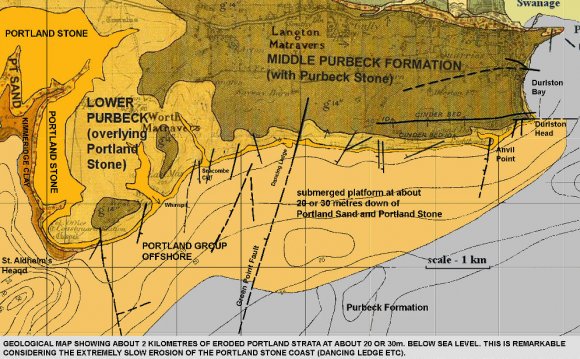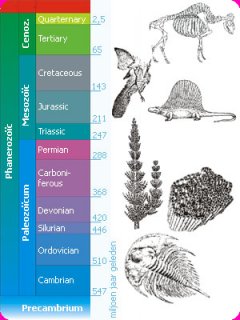

| period | years ago | features |
| Carboniferous period | 368-288 million | Formation of minerals (coal, natural gas, oil) |
| Permian | 288-247 million | salt deposition |
| Triassic | 247-211 million | Muschelkalk deposition |
| Jurassic | 211-143 million | volcano under the Wadden Sea |
| Cretaceous | 143-65 million | imestone, marl |
| Tertiary | 65-2, 5 million | formation of the North Sea basin |
| Quaternary | 2.5 million - present | Glacial Ages |
| Pleistocene | 2.5 million - 10, 000 years | evolution of man |
| Holocene | 10, 000 years ago - present | Peat formation |
The planet earth formed more than 4.5 billion years ago. The geological time scale is divided into the Precambrian and the Phanerozoic. Within in the Phanerozoic, roughly the last 570 million years, three eras can be distinguished: Paleozoic, (574 to 247 million years ago), roughly the days before the dinosaurs, the Mesozoic (247 to 65 million years ago), the days of the dinosaurs, and the Cenozoic (65 million years ago till the present), the days after the dinosaurs.
Important geological events, such as periods of mountain formation (orogenesis) or notable changes in the species of fossils found in various layers in the earth, give the criteria for which man has based the divisions in the geological time scale.
The eras are subdived into time periods. For example, the Quarternary has been classified in the epochs Pleistocene (from 2.5 million years to ten thousand years ago) and Holocene (from 10, 000 years ago to the present).
RELATED VIDEO












